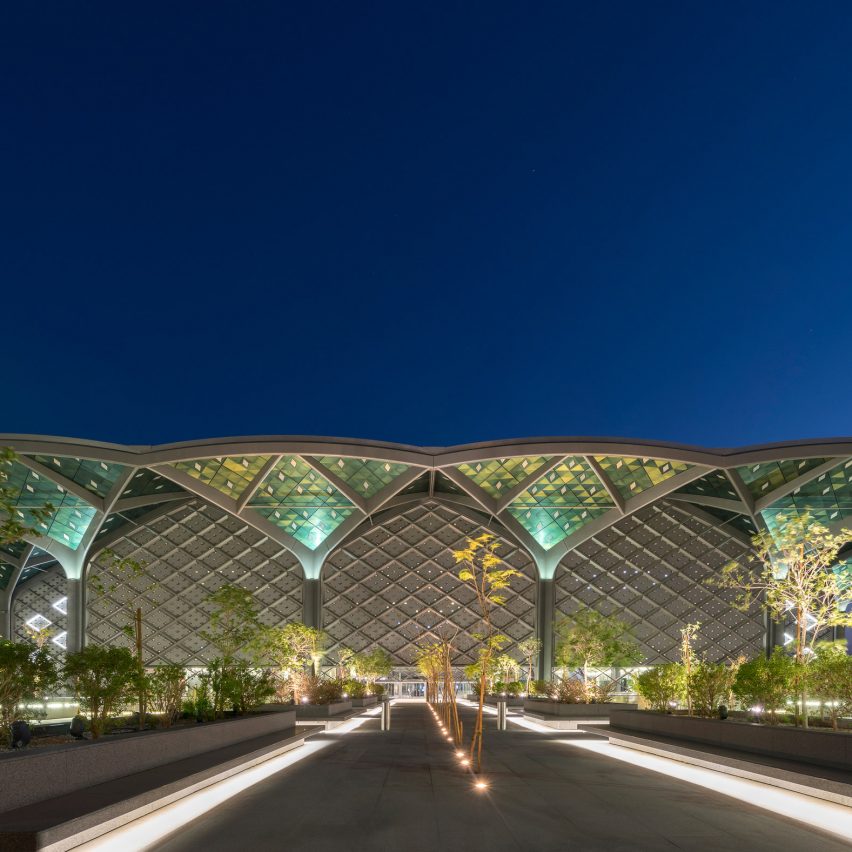
Foster + Partners has completed stations in Saudi Arabian cities Mecca, Medina, Jeddah and King Abdullah Economic City, connected by the 280-mile Haramain high-speed rail line.
The stations, “conceived as gateways to each city”, are designed to offer a unified appearance to between 60 million and 135 million passengers anticipated to use the high-speed line each year.
“We have designed all four stations, resulting in a consistent approach and intuitive wayfinding strategy throughout the network,” said Angus Campbell, senior partner at Foster + Partners.
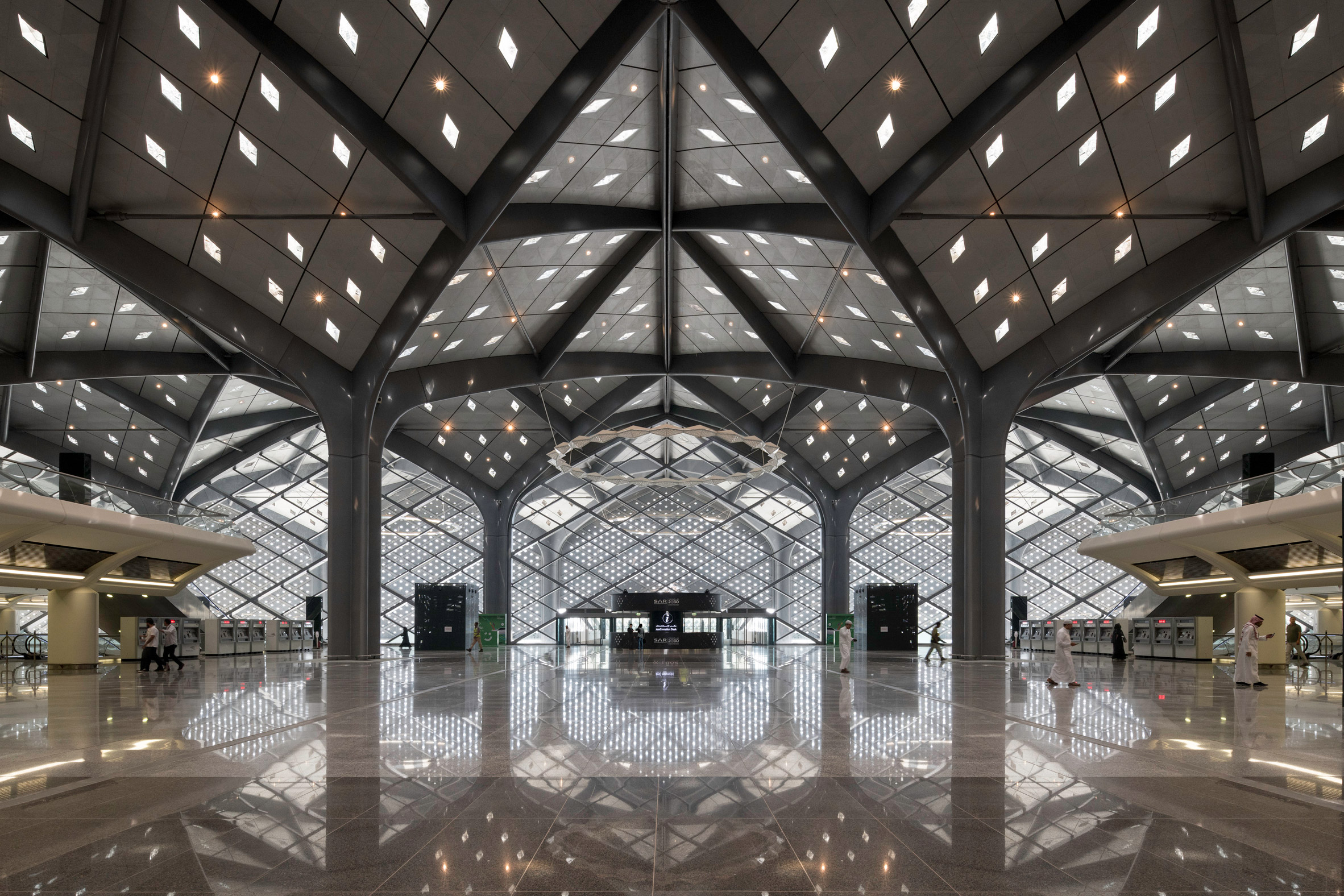
All four of the stations, which can handle up to 20,000 passengers an hour, have been built using the same modular system.
They are all covered by flexible vaulted roofs supported by grids of steel columns – described by the practice as structural trees.
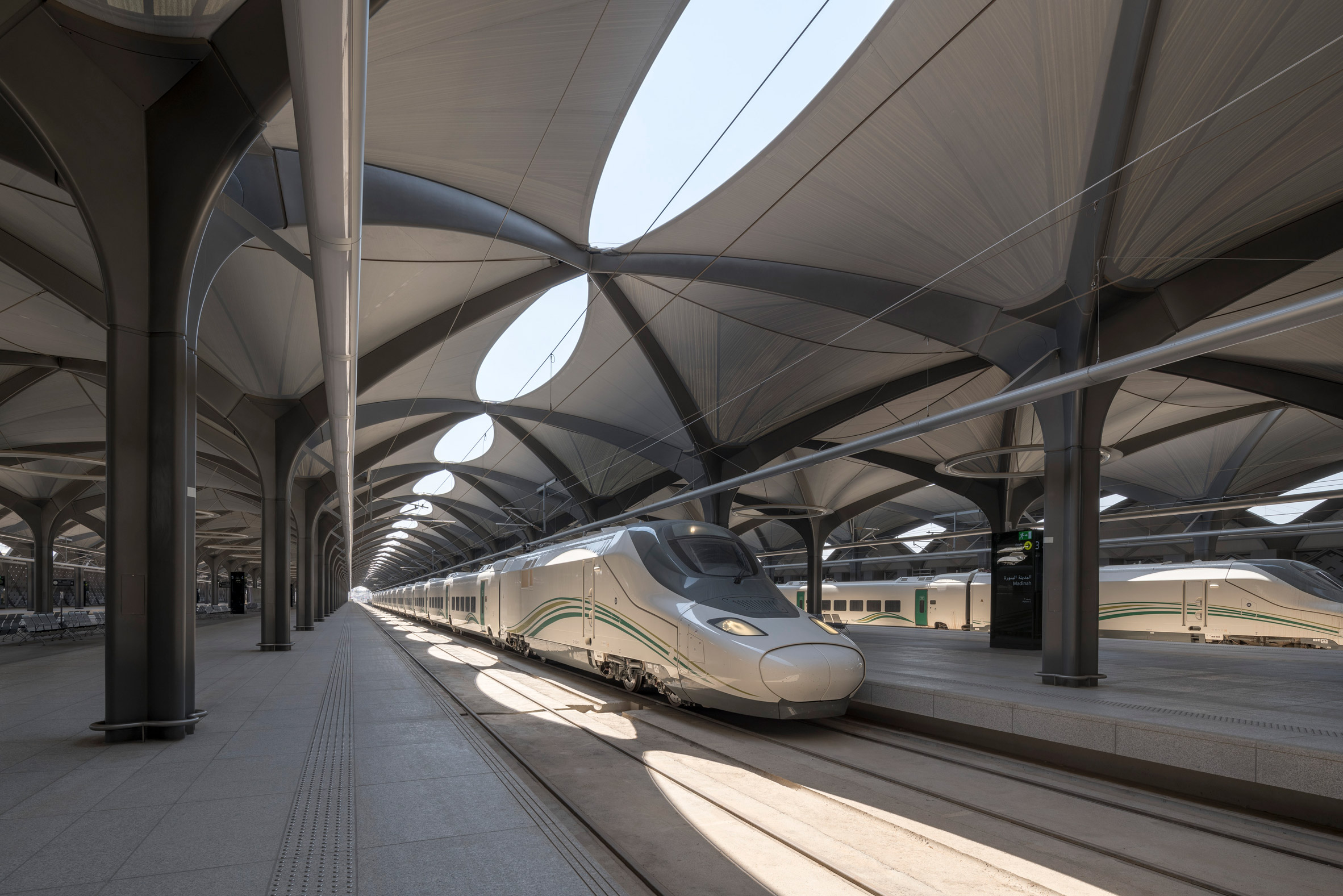
The modular system meant that each station could be designed to fit its site, and that in the future the grid can be extended to increase capacity.
“The stations are based on a common 27-metre-square module containing the roof, concourse and platform, which is flexible enough to be reconfigured for both through and terminus stations, while also making it possible to extend the stations in response to changing passenger requirements,” continued Campbell.
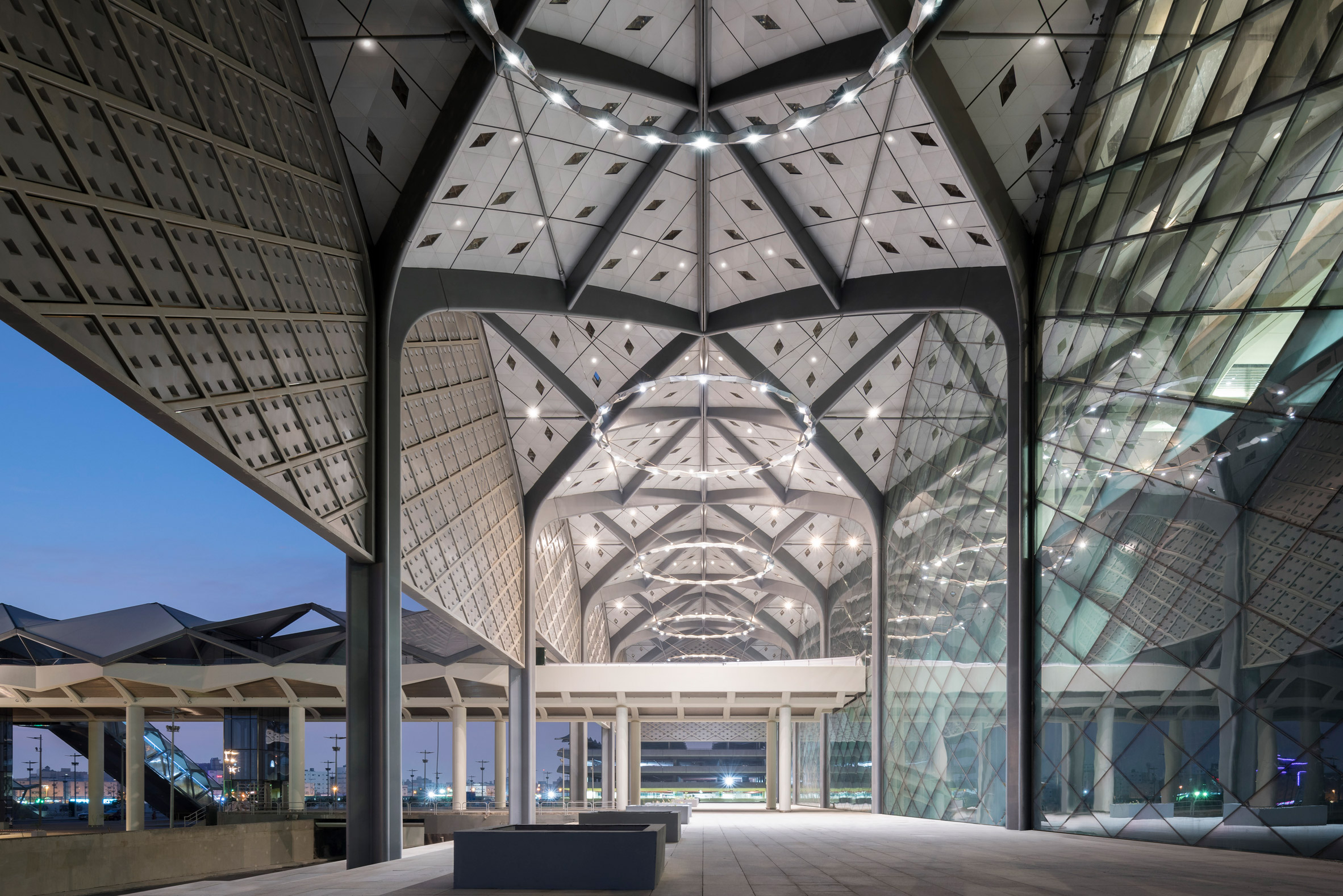
The buildings are designed to be shaded areas that can provide a respite from the country’s heat. Small openings within the building’s roof and its walls allow controlled amounts of light into the stations.
All of the stations have been designed so that they maintain low ambient temperatures without the need for using mechanical cooling. Large fans and misting devices have also been installed on the platforms to keep this area cool.
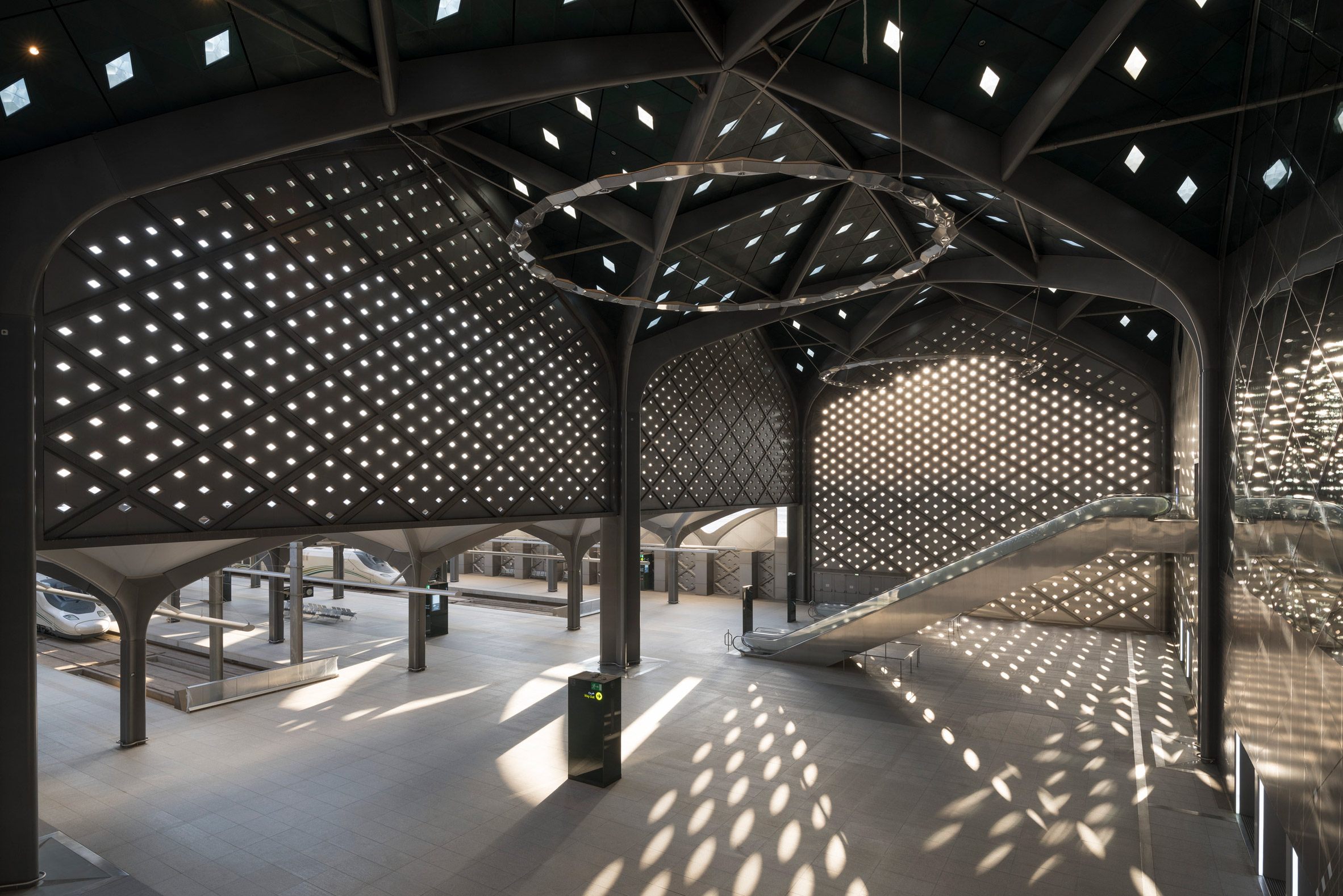
Between the station’s vaults, which are a different colour in each of the cities, large circular chandeliers provide light and are intended to “accentuate the rhythm of the structure”.
“The designs of the new stations focus on passenger comfort, while building on the sense of excitement and wonder that is inextricably linked to the idea of travel,” added Luke Fox, head of studio at Foster + Partners.
The Haramain high-speed rail line now links the Muslim holy cities of Medina and Mecca, via the coastal cities of Jeddah and King Abdullah Economic City. The 280-mile journey between the two holy cities now takes two hours and 20 minutes, with trains running at a maximum speed of 200 miles per hour.
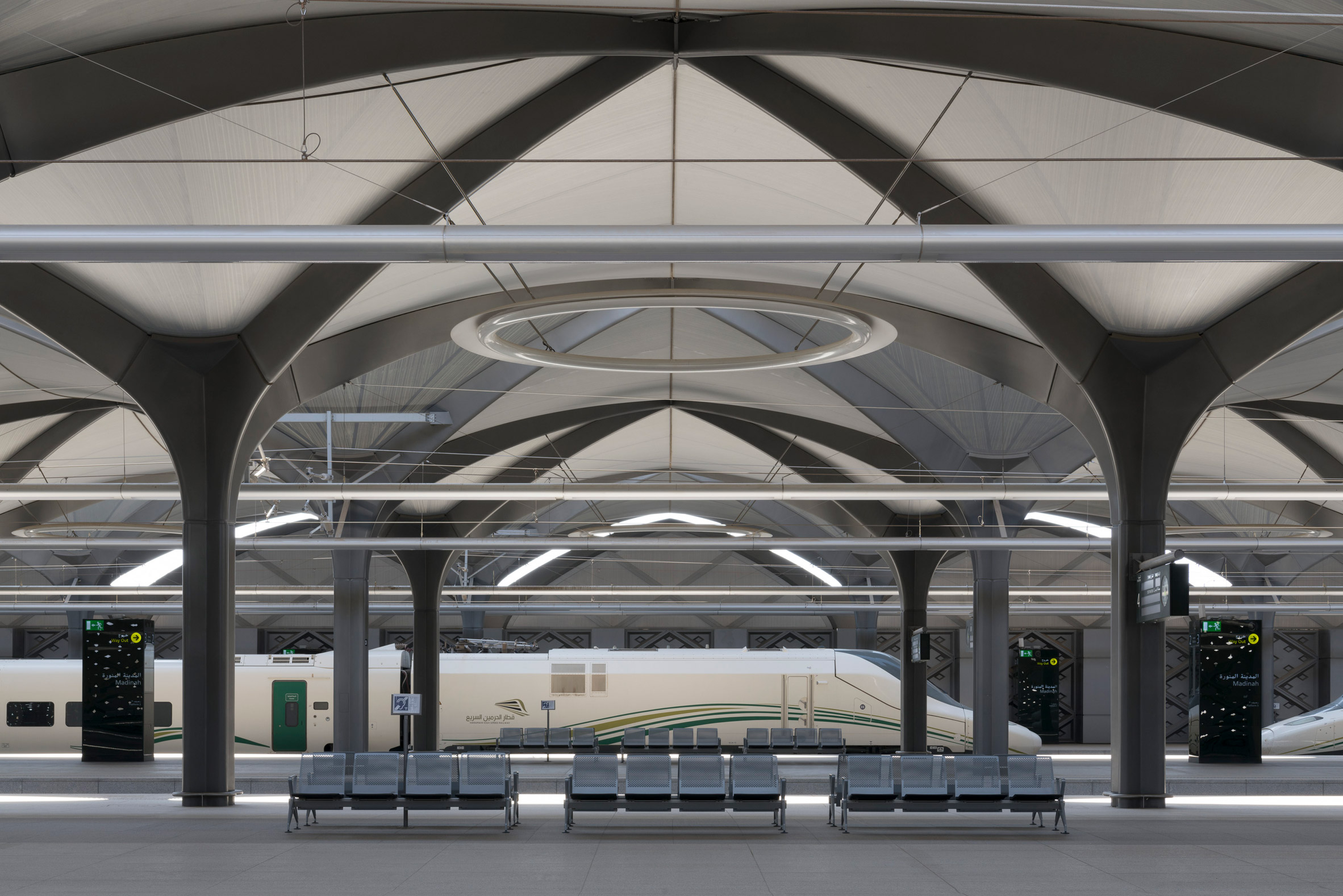
Foster + Partners, which was established by Norman Foster in 1967 is also designing the Jeddah metro system, which will connect to the high-speed station in the city. This is one of many mega-scale architecture projects that are currently underway in the country.
Last year, following the murder of journalist Jamal Khashoggi, Foster temporarily suspended himself from his role on the advisory board of a project to build a £382 billion smart city in Saudi Arabia.
Photography is by Nigel Young.
The post Foster + Partners completes quartet of high-speed rail stations in Saudi Arabia appeared first on Dezeen.
